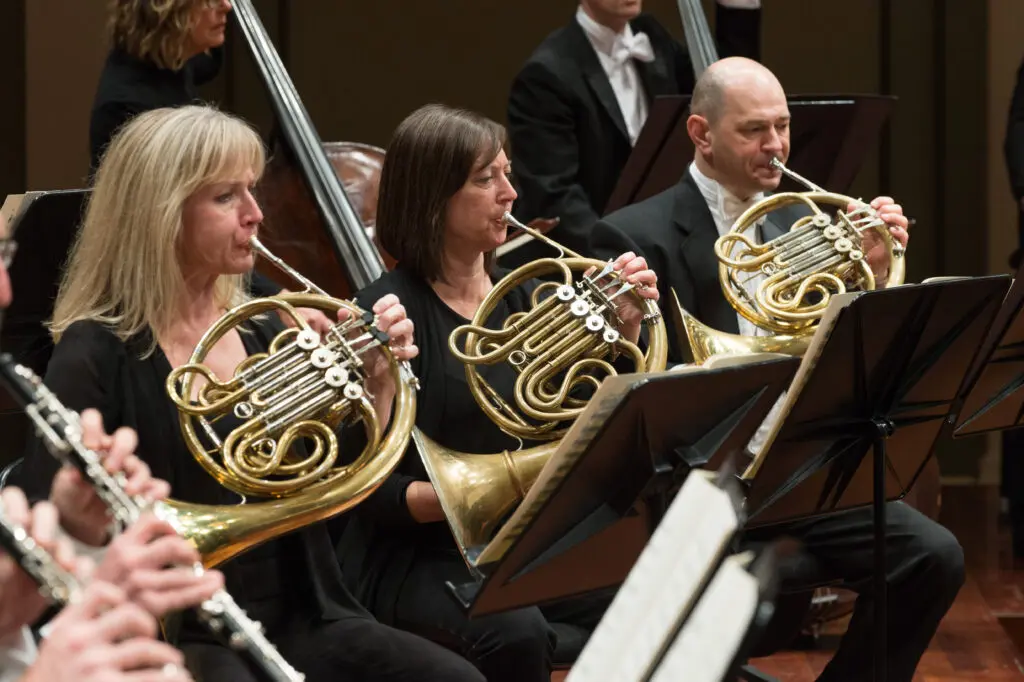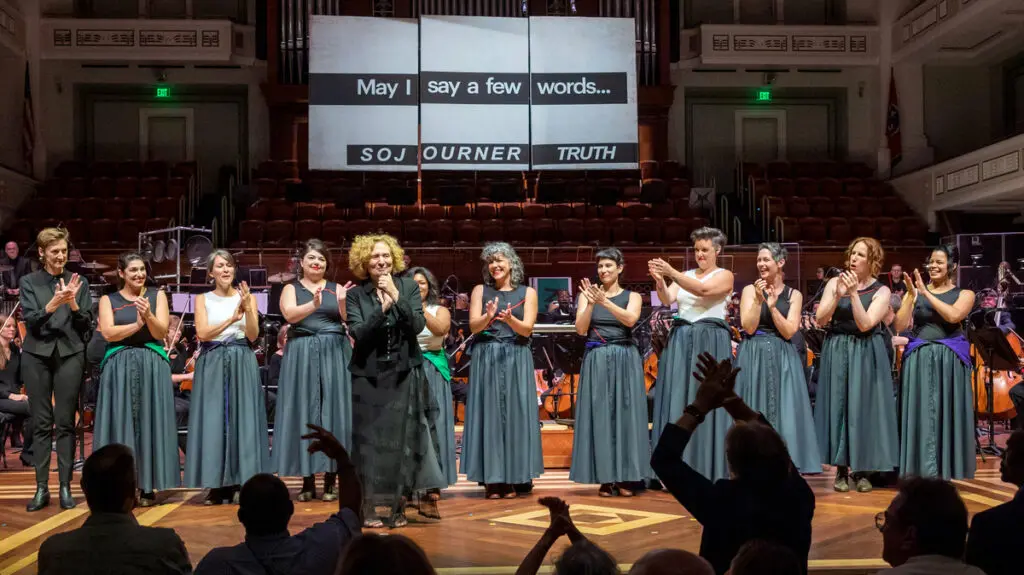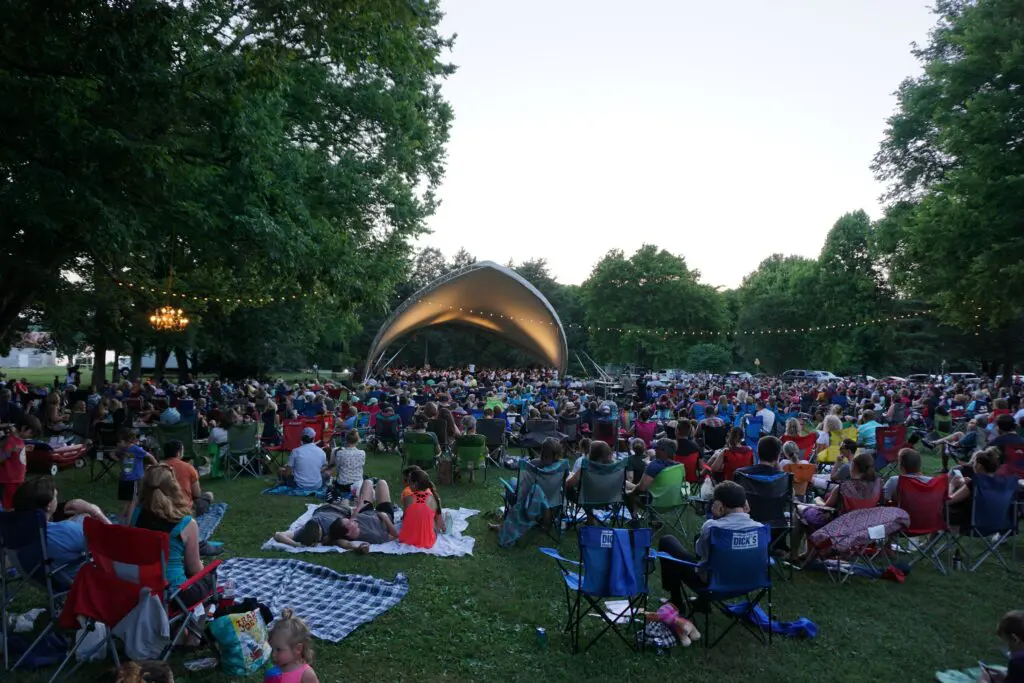Among other tools, organizations can drive donor cultivation through the creation and engagement of an associate board.
Known as “The Great Wealth Transfer,” Baby Boomers will pass on an estimated $84 trillion over the next two decades – the largest wealth transfer in human history. At the same time, the number of retirees is rapidly accelerating. These factors will significantly alter nonprofits’ donor base and have an outsized impact on the composition of governing boards as new generations become the leading stewards of organizations’ missions. Nonprofits that seek to get ahead of this trend are focusing on nonprofit donor cultivation through associate boards.
The data is clear: now is the time to act. As discussed in our recent publication Finding, Engaging, and Retaining the Next Donor Generation, over the last decade, the average millennial (those born between 1981-1996) household has increased its giving by more than 40%. Millennials have surpassed Gen X as the second most philanthropic generation in America, second only to Boomers. Despite this, donor participation rates are going down overall, meaning organizations have an imperative to prioritize sourcing their next generation of mission-champions.
Volunteerism has always played an important role in philanthropy. In fact, nearly half of major donors report that they volunteer for their top philanthropic priority organizations. The volunteer-to-donor overlap is even more significant among younger generations, for whom service and activism are frequently embedded in their upbringing. These generations are also more likely to be influenced by their peers’ giving and by peer-endorsement of institutions and brands (i.e., those already volunteering for an institution).
What Is an Associate Board?
Associate boards (sometimes coined ‘young’, ’emerging leaders’, or ‘junior’ boards) are volunteer boards that can be a powerful affinity-building opportunity; seed a donor pipeline for future decades; and have numerous short- and long-term benefits on an institution’s culture of philanthropy, contributed and earned revenues, and community engagement writ-large.
In this article, we’ll describe the five necessary factors and steps needed to launch – or revive – your associate board. We’ll articulate how building a vibrant culture of philanthropy in your associate board can emanate outwards, inspiring your institution via the power, passion, and vision of these motivated Millennial and Gen Z leaders.
- Define your “Why”
- Ensure you have your champions for this initiative
- Value the program fiscally inside your organization
- Embrace that this will be a resume and network building opportunity
- Manage your “cliff” – transitions are key
We’ll model these 5 key steps with a successful case study from Nashville Symphony, an internationally regarded, Grammy® Award winning orchestra, and long CCS partner on various projects since 1998.
THE NASHVILLE SYMPHONY STORY
A clear, winning strategy for a thriving associate board
The Symphony founded their Associate Board in 2017 to champion the Symphony’s fledgling Crescendo Club audience development initiative for under-40 patrons.
By adhering to these principles, the Symphony’s associate board has driven hundreds of thousands of dollars in new contributed revenue, launched a signature event which is now the Symphony’s third largest annual fundraiser, and placed several Associate Board members on the organization’s fiduciary Board of Directors as well as on other prominent boards in Middle Tennessee.
Nick Deidiker, former Associate Board Chair and current Board Development Committee Chair shares that “Serving on the Associate Board was one of the most rewarding experiences I’ve had the honor of being part of. I’m proud of what we started and continue to be impressed and encouraged by all that successive Associate Boards have been able to accomplish.”

Step 1: Define Your “Why”
Before you start, we recommend that you ask yourself: is launching or reviving an associate board an initiative you can support long-term? Be prepared to experiment for at least three to five years before deciding whether to continue. If you decide to move forward, center this conversation in your values and your mission.
Consider how long-term donor cultivation will impact your organization and donor base over the coming years and decades, and proactively plan according to these trends.
Discuss these questions with your team: fundamentally, why are you launching this initiative? What will you change or achieve through the enhanced efforts of these new volunteer leaders? How will you align your associate board’s operations with your larger institutional goals and your current strategic plan? Are you aligning your needs to local and national philanthropic trends? The answers to these questions will inevitably evolve, but specificity at the start is key to your success.
Keep expectations realistic and clear. An associate board will not solve all your institutional woes. Be particularly wary of the idea that your associate board can quickly change or fix issues with your larger fiduciary board. However, with a well-defined vision, an associate board can play a transformational role in your organization’s advancement — as is evident from the Nashville Symphony’s own path.
Ask yourself: is our goal with launching (or reviving) our associate board to…
- Advance goals related to diversity, equity, inclusion, and belonging for our organization?
- Grow our pool of mid-level dollar donors?
- Cultivate Millennial and Gen Z philanthropy (and our broader community)?
- Develop new audiences / patrons / customers (especially in a target demographic(s))?
- Develop an ongoing pipeline to grow and enhance our Board of Directors?
- Vet prospective board members?
- Improve engagement with a particular community related to our organization’s model?
THE NASHVILLE SYMPHONY STORY
The Nashville Symphony’s “Why” focused on championing the organization’s new 40-and-under Crescendo Club; and on long-term engagement of the next generation of the Symphony supporters.
The Symphony quickly delegated success of the signature Spirits of Summer fundraiser to the associate board. Under their highly ambitious leadership, the evening grew from a 30-person gathering into the third-largest fundraiser for the Symphony in just five iterations. The event is now a hallmark of Middle Tennessee’s social calendar, attracting not just younger attendees but those of all ages.
“Our first event was a learning opportunity. We sold tickets at $150 for a cocktail reception before a $35 outdoor concert. It did not work. The next year, we rewrote the script: $50 ticket prices, cocktails paired to each piece of music, and our orchestra members interwoven among the crowd. It was not a concert, it was a ‘festival’ — and it definitely worked. Once you get the details right, a good time is an easy sell.”
– Hank Ingram, Inaugural Associate Board Chair, and current Board Secretary

Step 2: Ensure You Have Your Champions To Launch/Revive Your Associate Board
All associate boards require a champion for success – a staff member who will drive this project together. They will need to both address short-term operational needs and foster the vision for long-term growth. Don’t underestimate the time and attention that a new associate board will require, especially for the initial two to three years of liftoff.
One of the key needs for your champion is to drive a decision regarding where the associate board will sit structurally in your organization. Ensure anyone who will be impacted is included in some way during the planning process. These include your chief executive; their assistant; various departments and staff members throughout your institution; your board chair; governance committee chair; development committee chair, and other board members as relevant.
Equally critical is buy-in from the board. This is most effectively done by identifying one to two dedicated board members who will actively help to make this governance structure a reality.
Ask yourself: who will our associate board’s champion be…
- Our CEO or President?
- Our CEO or President’s Office (i.e., an executive assistant, coordinator, or special projects team member)?
- Someone on our Marketing team?
- Someone on our Community Engagement team?
- Someone on our Philanthropy team?
- A board member? (And on which committee(s)?)
Once a decision has been made, be sure that your organizational chart is formally revised and that everyone impacted has both verbal and visual articulation of how the associate board will fit within your operations and organization. Continue keeping board members apprised.
THE NASHVILLE SYMPHONY STORY
The Symphony faced a key decision when launching its Associate Board: where it would be placed in the institution. The Symphony decided the development team would make the best home, leveraging the Development team’s unique Patron Engagement Officer role (a hybrid gift officer and VIP donor concierge), its special events team, and the ability to leverage existing strong relationships with board members who could refer prospective associate board members. The development team continued its already-close work with senior leadership as well as the marketing department to ensure associate board activities had full-institution support. The Symphony also leveraged the board’s existing best-practices, bylaws, and structure for efficiency and to create parallels in board operations.
“We knew we would soon find ourselves in need of new leaders to step up and champion our organization. Why would we wait for those leaders to emerge when we could help to foster them ourselves? Placing the associate board within the fundraising team – and inviting them to our full board meetings – is the best way to create the conditions we need. Now, our institution’s future leadership pipeline is bright for many years to come.”
– Alan D. Valentine, President & CEO, Nashville Symphony

Step 3: Value the Program Fiscally Inside Your Organization
As the adage goes, “If you want to know someone’s values, look at their budget.”
Ask yourself:
- What is our fiscal commitment to funding this program? How much can we allocate?
- What expenses do we project?
- What is our revenue expectation from this board?
- What will our “give/get” policy be? It can be a percentage of income; a “top three” request; a certain amount or threshold; or tangible ways to track give/get.
Common expenditures for an associate board may include:
- Leadership development activities, such as speakers, training, or books
- Meeting materials, supplies, and refreshments
- Discounted admissions, memberships, or other institutional costs
- Engagement and stewardship activities, such as special events or outings
Associate boards require both start-up and ongoing costs. At the same time, they should drive new revenue for the organization (though as a leadership investment opportunity, they may not always be revenue-positive). With the right framework, associate boards can even have a transformational impact on an organization’s bottom line — as has been the experience for the Nashville Symphony.
THE NASHVILLE SYMPHONY STORY
From the start, Nashville Symphony’s Associate Board was given significant trust in shaping Crescendo Club events and their annual Spirits of Summer fundraiser. As next-gen leaders with a thirst for innovation and growth, the Associate Board defined clear give-or-get donation policies for themselves and set ambitious revenue targets for activities from the get-go. This ambition continues to fuel the board’s recruitment, activities, and oversight.
As a result, the Associate Board’s Spirits of Summer event has grown from a small initiative into the third largest fundraising event for the institution by dollars raised.
“We’ve come a long way in a short time. I think that our success was largely due to two primary factors: passionate members, and support from the Symphony’s staff and existing board of directors.
When the associate board was originally empowered to ‘own’ our event, Spirits of Summer, there were a lot of questions about whether we could even pull it off… But giving the associate board the responsibility to create, market, and produce its own event (all within the confines of a fairly modest budget) provided the spark that set off a fire of enthusiasm. The event made everyone realize how important it was to not just reach new patrons of the symphony, but younger patrons, future patrons, and that this could be successfully accomplished through an associate board structure.”
– Nick Deidiker, former Associate Board Chair; current Board Development Committee Chair
Step 4: Embrace That This Will Be a Resume- and Network-Building Opportunity
Leadership development and networking are key to any board. These will hold outsized value for an associate board. As younger professionals, associate board members may take a transactional or skill-development-driven approach to their service. Embrace and leverage this reality. Ensure strong screening for new members, set clear expectations, and select early leaders who can model the kind of service you wish to see in all associate board members.
Your designated associate board champion and their team (see step two) should research generational workstyles and volunteerism to ensure you incorporate best practices, relevant language and culture, and operational frameworks to maximize engagement among your Millennial and Gen Z volunteers.
Ask yourself:
- What is our associate board term length and structure? Have we accounted for some members transitioning to new organizations and/or new careers during their term?
- Are we structuring board service for members to ‘grow’ their leadership skills as much as they ‘give’ in time, talent, and philanthropy?
- Have we included meaningful opportunities for our Associate Board to engage with members of our primary Board of Directors/Trustees and institutional leaders?
- Where have we incorporated learning, leadership development, and mentorship into our work? Are our expectations reasonable for board members’ demographics?
THE NASHVILLE SYMPHONY STORY
Among many decisions, the Nashville Symphony needed to decide if and when associate board members would have access to board meetings. In addition to their own associate board meetings, all associate board members are also able to optionally attend full board meetings (with the exception of executive sessions). This allows for the organic building of relationships, and opportunities for associate board members to glean best practices and key information.
“Overall, serving on the associate board helped propel me into a larger role in the Nashville arts community, including being asked to join the Board of Directors at the Nashville Repertory Theatre. Our associate board has the ear and recognition from Symphony leadership. We are seen as pivotal to the continued growth of the Symphony… I’m not only grateful for the impact I’ve been able to make to the Symphony, but ultimately the impact the Symphony and the associate board have had on my life and career.”
– Samantha Breske Magee, former Associate Board Chair and 2024 Spirits of Summer Co-Chair
“Nashville is such a transient community with so many young professionals. As a newcomer to Nashville, I knew the best way to integrate was to get involved with an organization and ask, “How can I help to make it better?” In doing so, I not only became more invested in Nashville, but met others who were aligned to my life priorities philanthropically and as emerging leaders. The associate board connected me with others I would not otherwise have met – influential peers but also authentic introductions to Symphony board leaders who were valuable, high-caliber connections at key moments in my career.”
– Mandi Kane, former Associate Board Chair

Step 5: Ensure Smooth Transitions
The way associate board members enter and exit their service term is key. Given the demographics of typical associate board members, plan for higher fluidity and turnover than on your governing board (including both members of the board transitioning employers, and in rolling off the board generally).
Ask yourself:
- How are we designing the pipeline to ensure success (i.e., term length, any leadership/officer structures on your board)?
- What are our expectations for associate board members following their term?
- Do we have a clear pipeline for understanding who from the associate board may be a good fit for your Board of Directors/Trustees – and who will not be a good fit?
- What communications and stewardship plans do we have in place to manage former associate board members? How will we continue to engage and leverage their enhanced affinity for our organization?
Designing meaningful transitions for each retiring associate board is key to your success in managing your post-service ‘cliff’. Create opportunities for celebration, reflection, and continued stewardship. Organizations should treat this ‘cliff’ as an opportunity. Work with each associate board member to identify next steps post-service. Most of your associate board alumni will not directly join your organization’s fiduciary board. Ensure you define meaningful transitions for these engaged, passionate volunteers in whom you have invested so much time.
THE NASHVILLE SYMPHONY STORY
Similarly to its fiduciary board, the Symphony asks all associate board members to make a personally meaningful gift to the annual fund. However, the Symphony offers a unique framework: associate board members receive benefits double to their gift amount (as do at-large members of the Symphony’s general young adults group, the Crescendo Club). This creates opportunities for associate board members to receive significant stewardship that may not be accessible to emerging professionals in their 20s and 30s.
“While this benefit may initially feel transactional, it offers incredible capacity to develop emerging leaders. As Associate Board members become more involved in supporting the mission of the organization, a culture of philanthropy forms – over time, giving becomes less about what can be received as a ‘benefit’ and much more about making a meaningful difference for the institution and our impact on the community.”
– Jake Tudor, Patron Engagement & Crescendo Club Manager
Beyond philanthropy, but equally as important, as Associate Board members reach the end of their service, the Symphony ensures that each associate board member who rolls off has a meaningful and defined pathway towards remaining engaged with the organization as a subscriber and supporter.
Nonprofit Donor Cultivation Is Possible With An Associate Board
The Great Wealth Transfer is coming, and it can significantly impact your organization. By launching or reinvesting in an associate board, you can cultivate the next generation of donors and ensure success during this wave of philanthropic opportunity. We encourage you to use this article and our worksheet to initiate a conversation with your team regarding launching your own associate board.
More Insights
How Donor-Advised Funds Shape Giving in Economic Downturns
Donor-advised funds (DAFs) have proven to be remarkably resilient in turbulent markets, but not all nonprofits benefit equally.
Strategic Fundraising Planning Using a ‘Balcony and Front Row’ Framework
Discover a practical framework that turns strategic plans into focused, donor-ready priorities to strengthen alignment and accelerate fundraising success.